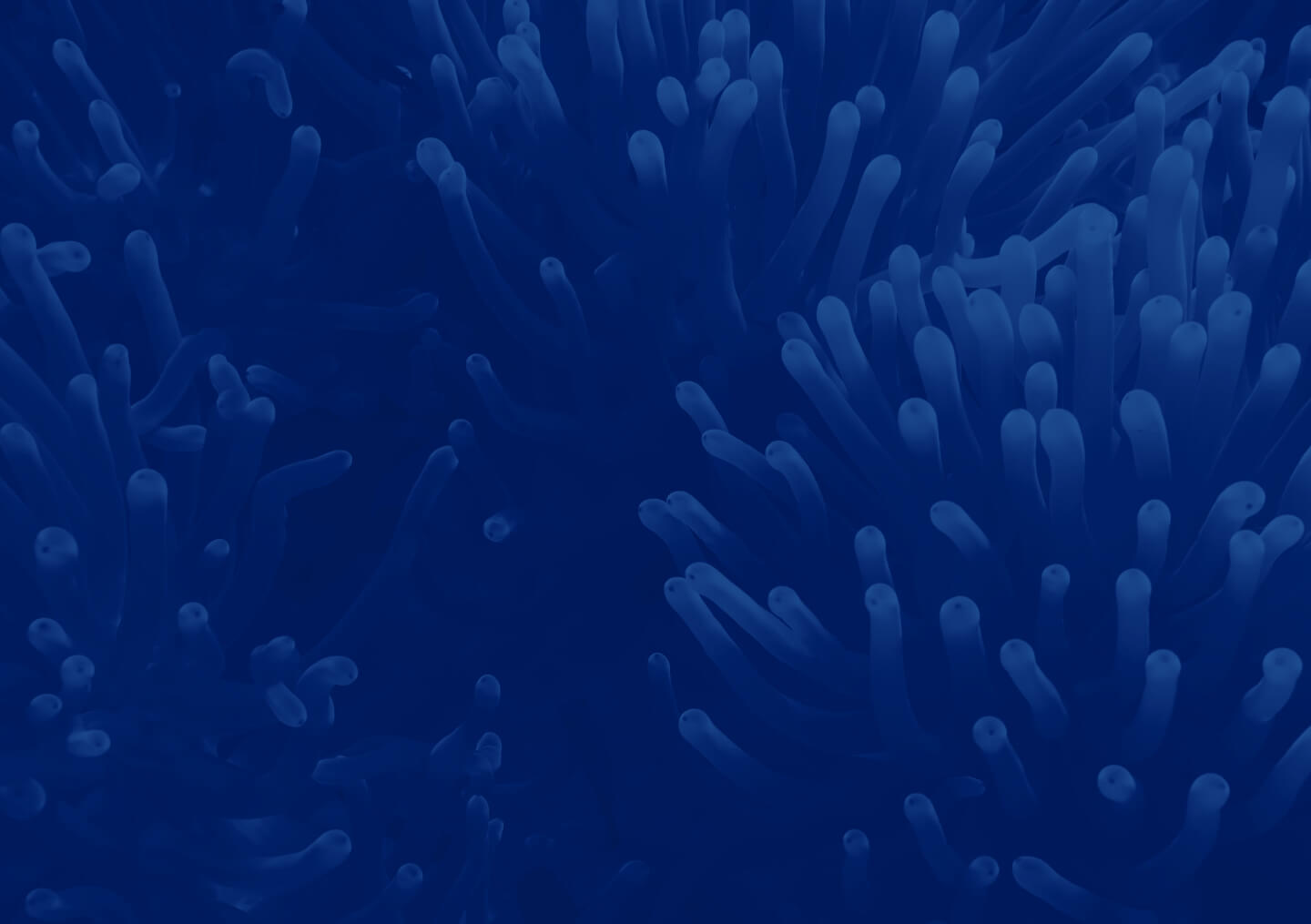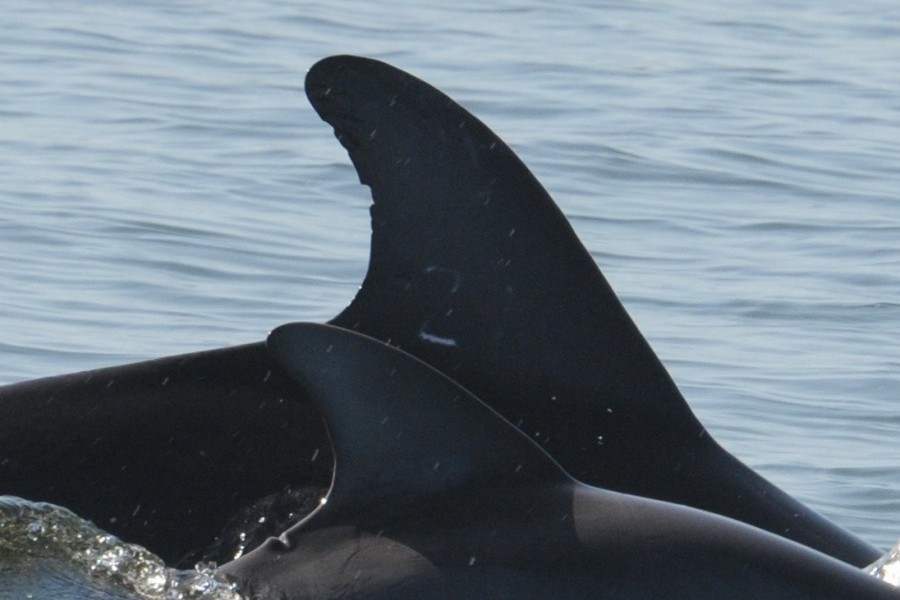“Ginger,” a bottlenose dolphin rehabilitated at Mote Marine Laboratory, was observed with a calf that appears to be her first baby on Aug. 6 in Sarasota Bay by the Sarasota Dolphin Research Program (SDRP), which has monitored Ginger since her birth to a well-known resident Sarasota Bay dolphin, including the period since her successful return to the wild in 2009.
Ginger, a Sarasota Bay resident dolphin, stranded at age 3 in December 2008 on Siesta Beach and was brought to Mote’s Dolphin and Whale Hospital, which is dedicated to rehabilitating and releasing sick and injured dolphins and small whales. Ginger was dehydrated and covered with toothrake marks from interactions with other dolphins, and appeared to be suffering from a respiratory condition called bronchopneumonia. All hospitalized dolphins require plenty of care, but Ginger stood out because she refused dead fish, and caregivers fed her with live fish only. Providing live fish helped Ginger to stay as wild as possible and be ready for release, but it required caregivers to go the extra mile.
“While Ginger was in our care, trained Mote volunteers spent 1,320 hours monitoring her condition, providing vital information about her progress,” said Lynne Byrd, Medical Care and Rehabilitation Coordinator at Mote. “Ginger ate nearly 4,000 pinfish during her rehabilitation. She was one of the most labor intensive patients that I’ve had the privilege to work with, and it was obviously well worth our effort!”
Ginger recovered successfully and was released in February 2009 wearing a VHF radio transmitter so she could be easily found and visually monitored by SDRP, a collaborative program between Chicago Zoological Society and Mote. SDRP has studied Sarasota Bay’s dolphins since 1970 and is the world’s longest-running study of a wild dolphin population.
“From the time Ginger was released, she has demonstrated her ability to reintegrate into the local, multi-decadal, multi-generational resident dolphin community and engage in normal dolphin activities,” said Dr. Randall Wells, Director of SDRP.
On Aug. 6, the sight of Ginger with a new calf drove home that she has been thriving as a member of the resident dolphin community in Sarasota Bay.
“Successful reproduction is a very good indication of successful treatment in rehab,” Wells said.
The calf was probably born during the past few weeks. On Aug. 6 it still bore vertical creases from where it was folded in the womb. However it already appears to have a healing wound, perhaps from a boat strike or a shark. SDRP scientists will continue to monitor for both calf and mom.
Watch out for marine life
During summer — a busy season for both marine life and humans on the water — Mote recommends that boaters follow Coast Guard-approved safe boating guidelines and use vigilance to avoid striking marine animals.
Dolphins do not, or cannot always get out of the way of approaching boats, and fatal collisions have been documented in Sarasota Bay. The Bay’s resident dolphins frequent shallow waters where they may be unable to dive below an approaching boat, and naïve newborn dolphins lack the skills and experience to avoid boats, and have to surface more frequently to breathe than do older dolphins.
Manatees are also on the move in the Bay for foraging and mating. People might observe mating herds: several manatees gathered as males vie to mate with a female.
Sea turtles are swimming just offshore to mate before the females come ashore to nest. So far this year, Mote’s animal rescuers have responded to or received many distressed or deceased sea turtles, including several affected by human activity.
Here are specific ways to help keep our waters safe for marine life:
- Within Sarasota or Manatee county waters, if you see an entangled, stranded or dead dolphin, whale or sea turtle, please call Mote’s Stranding Investigations Program, a 24-hour response service, at 888-345-2335. If you see an entangled, stranded or dead manatee anywhere in state waters or an entangled, stranded or dead dolphin, whale or sea turtle outside of Sarasota or Manatee counties please call the FWC Wildlife Alert hotline at 888-404-FWCC FREE (3922), #FWC, *FWC on your cellular phone or use VHF Channel 16 on your marine radio.
- Boaters should follow 10 dolphin-friendly viewing tips. Click here for a PDF. These tips were made with dolphins in mind, but they’re also great guidelines for the best ways to view all large marine animals.
- Wearing polarized sunglasses can help boaters see marine life in their path.
- Boaters and beachgoers should never feed marine wildlife. Click here to watch a PSA about why it’s harmful and illegal to feed wild dolphins: www.dontfeedwilddolphins.org
- Beachgoers should stay away from sea turtle nests marked with yellow stakes and tape, and seabird nesting zones that are bounded by ropes. Dogs are not allowed on Sarasota County beaches other than Brohard Paw Park in Venice, where they must be leashed or under voice control, according to county ordinances.
- For numbers of sea turtle nests documented by Mote each week, along with more tips on how to protect sea turtles, visit: www.mote.org/2015nesting
- Be sure to stow trash and line when under way. Marine debris that accidentally blows overboard or out of a truck can become ingested by or entangled around marine life.
- If you observe a manatee mating herd – several manatees gathered as males vie to mate with a female – watch the manatees from at least 100 feet away. Coming any closer might disrupt the animals’ natural mating behavior or put people into harm’s way. Adult manatees typically weigh upwards of 1,000 pounds and people could be seriously injured.


